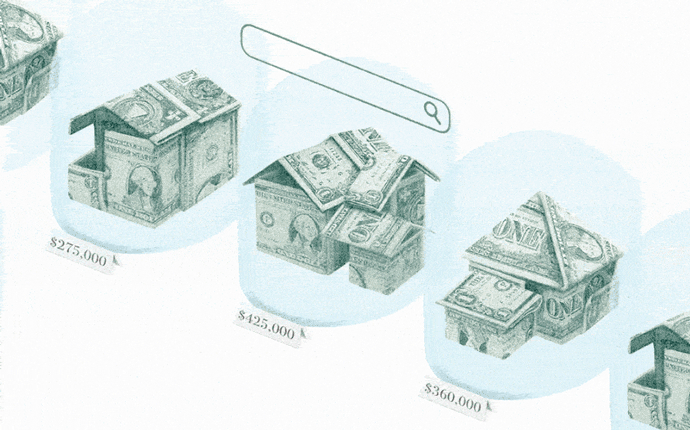 Pit stop: How gas stations as a real estate asset class are being disrupted
Pit stop: How gas stations as a real estate asset class are being disrupted
Trending
Covid-19 brings single family rentals into investor spotlight

Commercial real estate investors are sinking their teeth into the hottest new asset class: single family rentals (SFRs). An intense demand for the product along with technology that makes managing complex single family portfolios easier than ever is bringing institutional investment from the nation’s largest brokerages and asset managers to the sector. Long considered a niche asset class for local players, major firms are going big, vying for dominance in one of commercial real estate’s fastest growing asset classes.
Read more
 Pit stop: How gas stations as a real estate asset class are being disrupted
Pit stop: How gas stations as a real estate asset class are being disrupted
 The “office-pocalypse” might spark the great repurposing
The “office-pocalypse” might spark the great repurposing
Investing in single family homes is nothing new. Home flipping shows like Fixer Upper and Flip Or Flop have popularized the method for small time investors looking to earn something on the side. The problem has always been scalability. Flipping homes may be good money, but relying on appreciation for profit isn’t guaranteed (remember 2008?). Managing even a few single family homes can be a headache as problems pile up like in Tom Hanks’ classic The Money Pit. Managing renters can be even more difficult. That’s why commercial real estate has never taken the asset class seriously, leaving the sector to small time players to do the heavy lifting. That’s all changing.
“The industry was cynical about the ability to manage these single family homes. The early operators like Colony Starwood and Invitation Homes cracked the code,” RET Ventures Partner John Helm said. “They did this with tech. Once they demonstrated that you could do this, it has taken off.”
Rockpoint Group partnered with Invitation Homes on a $1 billion JV aimed at operating SFR across the Western US and Sunbelt regions. Rangewater put together an $800 platform to build and manage 15 SFR communities. JLL, one of the largest commercial brokerages in the United States, launched an entire team dedicated to SFR. JLL’s team has already pulled the trigger on a $133.7 million deal on behalf of Haven Realty Capital for a six-property portfolio of new and to-be-built homes in the greater Atlanta area.
“Demand for less-dense environments, more space for work and school, and a desire for the ‘lock-and-leave’ lifestyle support substantial demand for single-family rental homes,” JLL Senior Director Matthew Putterman said. Putterman helps lead recently established JLL’s National Multi-Housing Group. “Since the Great Financial Crisis, the adoption of new management and leasing technologies has enabled investors and operators to aggregate substantial portfolios in ways that didn’t previously exist.”
JLL said creating a SFR was in “direct response to the increase in institutional investor interest, which traditionally consisted of mom-and-pop investors.” A nationwide housing shortage coupled with older millennials looking to leave big city life to start families has bolstered single family rental demographics. COVID has created an intense demand for more space, driving shifts to suburban living, which has created the strongest housing rally since the 2008 crisis. Rents in institutionally owned SFR portfolios have grown more than 3 percent annualized in 2020, according to DBRS Morningstar. Retention rates have also been improving, which are now similar to self-storage.
Warren Buffet famously said if he had a way to manage single-family homes, he’d buy a couple hundreds thousand. Managing multifamily properties is far simpler. Hundreds of units can be managed by a single person. That many homes would be far too spread out to provide the same level of tenant experience. Technology is changing that. The entire SFR process has been reinvented. Early on during showings, virtual tours are helping renters narrow down choices to make decisions faster. When they’re ready to view, digital lockboxes make it so a property manager can unlock a home remotely. If they’re ready to sign, renters can apply, pay their deposit and sign their lease using their mobile phone. Once they’re moved in, mobile apps allow tenants to place maintenance requests, which fleet of service fans across the market respond to using digital inventory management and route optimization. Connected devices are helping to prevent maintenance requests, signaling to owners when there’s a water leak, open door or other issue. The improvements are win-win for both landlords and tenants. Renters feel less pain with a seamless experience making them more likely to sign and stay while owners have a powerful tool for managing assets they can’t always be near.
Assembling homes into an investment portfolio requires deep market knowledge and plenty of local experience. In major metros, being even just two streets down the block can dramatically impact a homes’ value. It takes experience to know that and that knowledge is hardly applicable in other markets. Tracking down housing data is much harder than commercial real estate. For one, single family homes are built at a rate most commercial operations can hardly fathom. In the last 4 yours alone, 90 million homes have been built in the United States. Tracking ownership, market intelligence and rental rates for just the homes built in the last four years is a feat. Sites like Roofstock and Zillow have been doing just that.
A major reason institutional investment is in a rush to move into the sector is that major players have yet to be established. Unlike multifamily, where huge corporations and REITs control the vast majority of assets, each with hundreds of complexes and tens of thousands of units, SFR is still a small time game. Institutional owners, who own more than 100 homes, comprise less than 3 percent of total inventory, according to JLL data. Establishing dominance won’t be easy. Beyond their competition, SFR is still a tough business to be in even with technology. Supply is a major issue. A booming housing market means investors assembling a portfolio are competing with families who want a home. Properties built specifically for renting are still a sliver of America’s overall housing stock. Though the number has been steadily increasing for nearly 20 years, new starts only totaled 14,000 during the third quarter of 2020, a 27 percent jump over the previous year, according to the National Association of Home Builders. The large percentage increase is directly related to the few number of starts.
With the push of institutional money into single family rentals we are likely to see even more tech sprout up to help them manage large portfolios. If the trend gets large enough it might even be able to sap some of the investment and human capital from the multifamily industry. Owning a single family rental is not for everyone but more and more large commercial real estate shops are deciding that it is in their wheelhouse and is a better asset type than their other options. [Propmodo]




